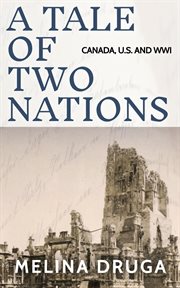Details
PUBLISHED
Made available through hoopla
DESCRIPTION
1 online resource
ISBN/ISSN
LANGUAGE
NOTES
How did newspapers report the events of World War 1? How much of the story was the media able to tell? Author Melina Druga asked these very questions and weaves together details from key events in the war using contemporary newspapers as her main source. As a consequence, the events in A Tale of Two Nations: Canada, U.S. and WW1 do not have the benefit of hindsight and analysis. The reporting is chaotic, incomplete and often inaccurate, but it paints a picture of the war as our ancestors knew it. A Tale of Two Nations: Canada, U.S. and WW1 is the story of two North American countries that found themselves embroiled in an European war - one by circumstance and one by choice. This is the complete edition in the journalism history series originally published in five parts: Part one, 1914: The war begins. Canada is proud to contribute to the war effort while the United States declares its neutrality. Part two, spring 1915 is consumed with two traumatic events. The Canadian Expeditionary Force passes its trial by fire, entering battle for the first time and winning glory while becoming victims of a chlorine-gas attack. A month later, the United States is shocked that German submarine warfare has killed civilians. The Lusitania is sunk, and war rhetoric is on the rise. Part three, 1916: Canada participates in the Battle of the Somme, one of the bloodiest battles in history and the conflict that introduces the tank, yet papers back home are preoccupied elsewhere. In the United States, the presidential election of 1916 brings out opposing viewpoints and results in a narrow re-election victory for President Woodrow Wilson. Part four, 1917: The Battle of Vimy Ridge often is called Canada's coming of age, but is that how contemporary newspapers viewed the victory? Meanwhile, President Woodrow Wilson, after years of pledging American neutrality and his re-inauguration, declares war on Germany. Part five, 1918: Armistice is declared at last, ending the Great War. However, joy is tempered by the Spanish Flu pandemic
Mode of access: World Wide Web







